Muslin, prized for its versatility and affordability, is a beloved fabric for countless crafting endeavors. Yet, understanding its tendencies is critical to maximizing its potential.
This lightweight, plain-weave cotton fabric is renowned for breathability and softness, but it can be susceptible to fraying at its edges. Additionally, with frequent use, pilling may occur.
However, with proper care and techniques, these issues can be mitigated. Pre-washing, employing specific sewing methods, and avoiding abrasive surfaces are all part of the equation.
This guide explores the factors at play, providing insights into harnessing muslin’s potential while ensuring its longevity and quality in various projects.
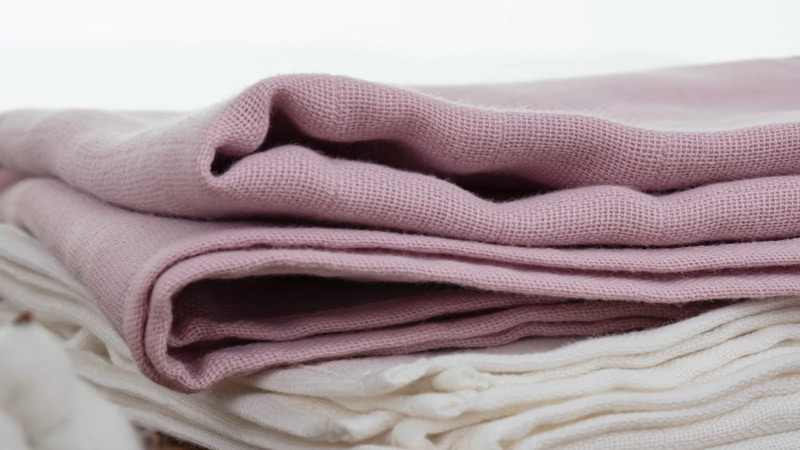
Does Muslin Fray?
Yes, muslin fabric can fray. Muslin is a lightweight, plain-weave cotton fabric known for its breathability and versatility.
While it has many uses in clothing, home decor, and crafts, it is not immune to fraying. Fraying occurs when the threads that make up the fabric start to separate and unravel along the edges.
Several factors contribute to muslin fraying:
Natural Fiber Composition
Muslin is primarily made from natural cotton fibers. Natural fibers like cotton are inherently more susceptible to fraying than synthetic fibers.
This susceptibility is due to the structure of the cotton threads, which have loose ends that can quickly unravel when exposed to stress or friction.
Wear and Tear
Fraying often occurs along the edges of muslin fabric, particularly in items like clothing and bedding where there is frequent movement and contact with other surfaces.
For example, the cuffs and hems of muslin clothing can experience fraying over time due to repeated bending, stretching, and contact with the wearer’s skin and other surfaces.
Washing
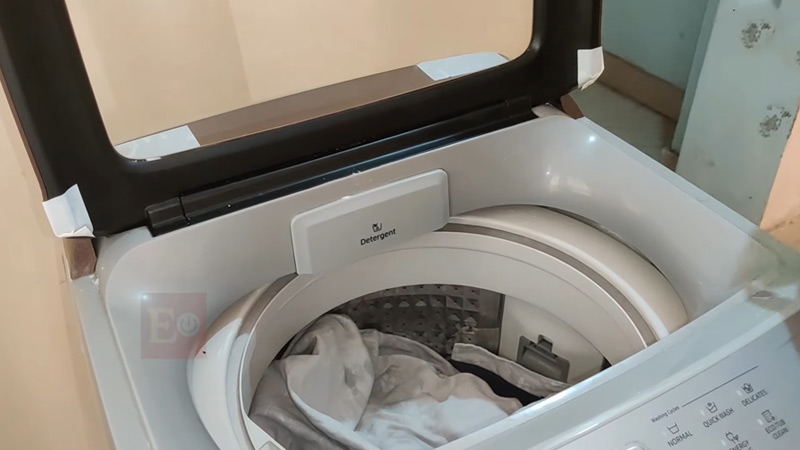
Washing muslin fabric, especially in a washing machine, can accelerate fraying. The mechanical agitation and the rubbing of the fabric against other items in the wash can cause the edge threads to weaken and begin to unravel.
Over time, this can result in noticeable fraying along the seams and edges of muslin garments, linens, or other products.
Thread Count and Weave Density
The thread count and weave density of muslin fabric can impact its tendency to fray. A higher thread count and denser weave result in a tighter, more robust fabric structure, generally less prone to fraying.
Quality of Manufacturing
The quality of manufacturing and finishing processes can significantly influence how prone muslin fabric is to fraying. Well-made muslin undergoes careful processing, which may include techniques to strengthen the fabric and reduce fraying.
Exposure to Harsh Elements
Exposure to harsh environmental elements, such as excessive sunlight, humidity, or chemicals, can weaken the fibers of muslin fabric, making it more susceptible to fraying.
UV rays from sunlight can gradually break down the fibers, especially if muslin items are left outdoors or in direct sunlight for extended periods.
Does Muslin Pill?
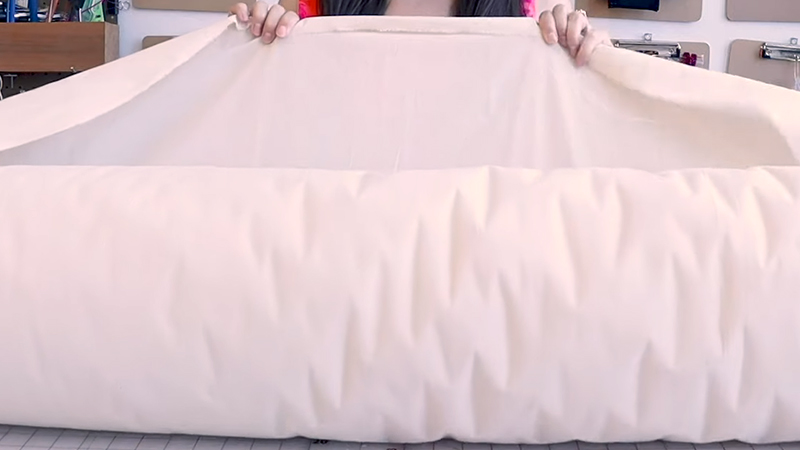
Yes, muslin fabric can pill over time with regular use and washing. Pilling is a natural occurrence with many fabrics, including muslin. It happens when the fibers on the surface of the fabric break and form tiny knots or balls due to friction.
While pilling is more commonly associated with knitted fabrics, it can also occur with woven fabrics like muslin, mainly if they are of a lower quality or subjected to significant abrasion.
Here are some factors that can contribute to muslin fabric pilling:
Fabric Quality
The quality of muslin fabric plays a significant role in its tendency to pill. Lower-quality muslin, often characterized by looser weaves and lower thread counts, is more susceptible to pilling.
On the other hand, higher-quality muslin with finer weaves and higher thread counts tends to be more durable and less prone to pilling.
Abrasion
Abrasion is a critical factor in the pilling process. Muslin fabric that experiences frequent rubbing or friction from regular wear or contact with rough surfaces is more likely to develop pills.
For example, muslin used in high-contact areas of clothing like underarms or elbows may be more prone to pilling.
Washing and Drying
How muslin fabric is washed and dried can significantly impact its tendency to pill. Harsh washing methods, such as strong detergents, high heat settings, or extended spin cycles, can weaken the fibers and contribute to pilling.
Contact with Rough Surfaces
Muslin fabric that frequently comes into contact with rough or abrasive surfaces is more likely to pill. This can occur when using muslin for certain types of upholstery or when it’s used near materials like Velcro.
Aggressive Cleaning Techniques
Using harsh chemicals or bleach when washing muslin can weaken the fibers, making them more prone to pilling. It’s essential to use gentle, fabric-friendly detergents and avoid any chemical treatments that may be too harsh for the delicate fibers of muslin.
Frequency of Use
Items made from muslin that experience regular wear, such as clothing or bedding, are more likely to develop pills over time.
The more frequently the fabric is subjected to movement and friction, the higher the likelihood of pilling.
Proper Handling and Care of Muslin Fabric
Proper handling and care of muslin fabric can significantly extend its lifespan and maintain its quality.
Here are some essential tips to consider:
Pre-Washing
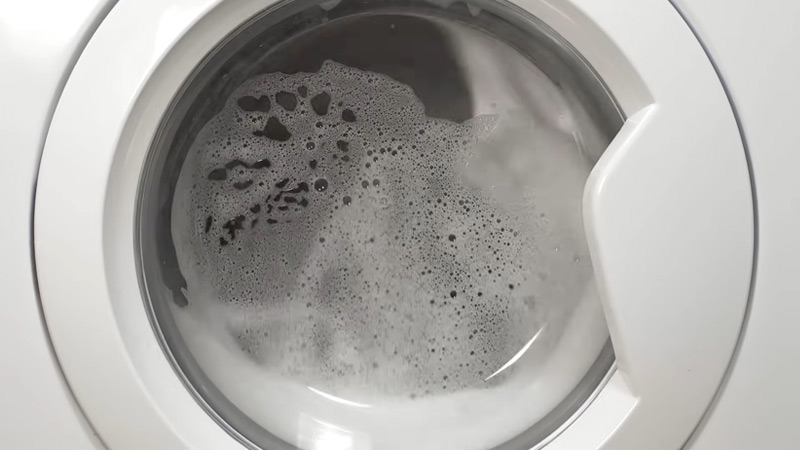
Pre-washing muslin fabric is a crucial step in preparing it for use. This process removes any sizing or residual chemicals applied during manufacturing and allows the fabric to undergo any natural shrinkage. Using a gentle cycle with a mild, fabric-friendly detergent is recommended.
Sorting by Color
Separating muslin fabric by color is particularly important if you have a variety of shades. This practice helps prevent color bleeding, which can occur when different colored fabrics are washed together.
It’s especially vital when working on projects that involve contrasting colors or intricate designs where color accuracy is paramount.
Washing
The proper washing technique is crucial for maintaining the muslin fabric’s integrity. Opt for a gentle cycle with cold or lukewarm water.
Harsher washing methods, such as hot water or strong detergents, can weaken the fibers and lead to shrinkage.
Drying
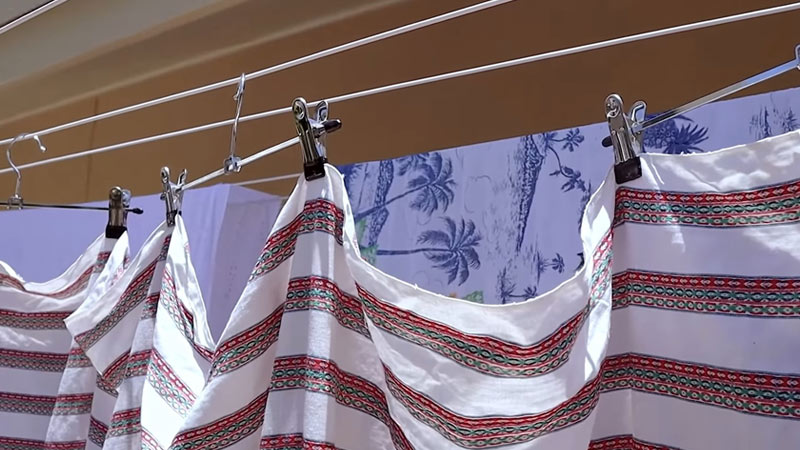
While air drying is the gentlest option, if you use a dryer, set it to the lowest heat setting.
It’s essential to promptly remove the fabric once it’s dry to prevent over-drying, leading to increased wrinkling and potential damage to the fibers.
Ironing
If ironing is necessary, it’s best to do so when the fabric is slightly damp. Use a low heat setting appropriate for cotton or linen fabrics.
Ironing muslin while still slightly damp helps smooth out wrinkles effectively without subjecting the fabric to excessive heat, which can compromise its structural integrity.
Avoiding Rough Surfaces
Muslin fabric is susceptible to abrasion, which can lead to pilling. When using muslin for clothing or other applications, be mindful of rough surfaces like Velcro or textured materials that could cause friction.
Minimizing contact with such surfaces will help preserve the fabric’s smooth texture and appearance.
Handling with Clean Hands
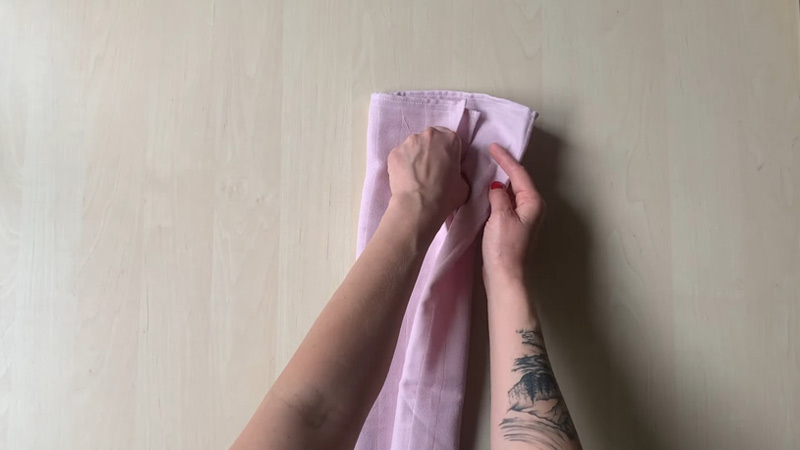
Handling muslin fabric with clean hands is essential to prevent the transfer of dirt, oils, or residues onto the fabric. This practice helps maintain the fabric’s cleanliness and overall longevity, ensuring it remains in top condition for your projects.
Avoiding Direct Sunlight
Direct sunlight exposure can lead to fading and weakening of the fabric fibers over time. To protect your muslin fabric, store it in a cool, dry area away from direct sunlight when it’s not in use.
If you’re working on a project outdoors, consider providing shading to shield the fabric from prolonged exposure.
Storing Properly
Proper storage is critical to maintaining the muslin fabric’s quality. When storing, fold the fabric neatly without excessive creasing or compression. This prevents permanent wrinkles and preserves the fabric’s integrity for future use.
Regular Maintenance
Regularly inspecting muslin fabric for signs of wear, loose threads, or potential issues is a proactive way to prevent further damage.
Addressing any concerns early on helps maintain the fabric’s quality and ensures it remains reliable for your projects.
Finishing Edges
Applying a finish to the edges of muslin, such as serging or using fray-resistant fabric glue, is an excellent way to minimize fraying.
This extra step adds to the fabric’s overall durability, ensuring the edges remain intact even after multiple uses and washes.
Tips for Using Muslin Fabric
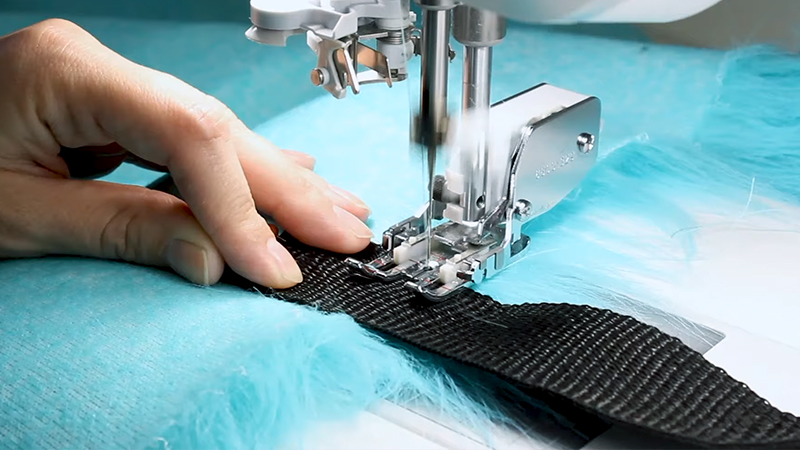
Muslin fabric is a versatile and widely used material known for its breathability, softness, and durability.
Whether you’re a seasoned seamstress or a beginner in the world of crafting, here are some valuable tips for making the most out of muslin fabric in your projects:
Selecting Quality Muslin
When it comes to choosing muslin, opt for a higher-quality variety. Look for a tighter weave and a higher thread count. This ensures excellent durability and reduces the likelihood of fraying or pilling over time.
Pre-Washing for Best Results
Before embarking on your project, take the time to pre-wash the muslin fabric. This step serves multiple purposes – it eliminates any residual sizing or chemicals applied during manufacturing, removes dirt or impurities, and allows the fabric to undergo any natural shrinkage.
Choosing the Right Needle and Thread
Selecting the appropriate sewing tools is crucial. Use a medium-sized needle designed for woven fabrics.
Pair it with a fine thread in a color that matches the fabric. This combination ensures clean and secure stitching.
Practice on Muslin First
Muslin’s affordability and versatility make it an excellent material for practice runs or mock-ups.
Before cutting into your final fabric, use muslin to test your pattern or design. This way, you can make necessary adjustments without risking mistakes on your primary material.
Finishing Edges to Prevent Fraying
Like many fabrics, Muslin can experience fraying over time, especially with regular use and washing.
Employ techniques like serging, pinking shears, or fray-resistant fabric glue to finish the edges. This helps minimize fraying and extends the fabric’s lifespan.
Using Muslin for Toile
Toiles, or mock-ups of garments, are invaluable in the sewing process. Muslin is often the fabric of choice for creating these prototypes.
It allows you to perfect the fit and make necessary adjustments before cutting into more expensive materials.
Consider Muslin for Linings and Interfacing
Muslin’s lightweight and breathable properties make it an excellent choice for linings, especially in lightweight garments.
It also serves well as an interfacing material, providing structure and stability to specific areas of your project without adding unnecessary bulk.
Gentle Handling During Construction
Muslin, while versatile, is still a delicate fabric. Take care when handling it, especially during the sewing process.
Gentle handling helps prevent unintended stretching or distortion affecting the final result.
Mindful Cutting and Marking
Accuracy is critical when cutting and marking muslin fabric. Take your time to ensure precise cuts. This attention to detail will produce a smoother assembly process and a more professional-looking finished product.
Creative Uses of Muslin Fabric
Muslin fabric, known for its versatility and affordability, can be used in various creative projects.
Here are some inventive ways to make the most of muslin:
Art Canvas
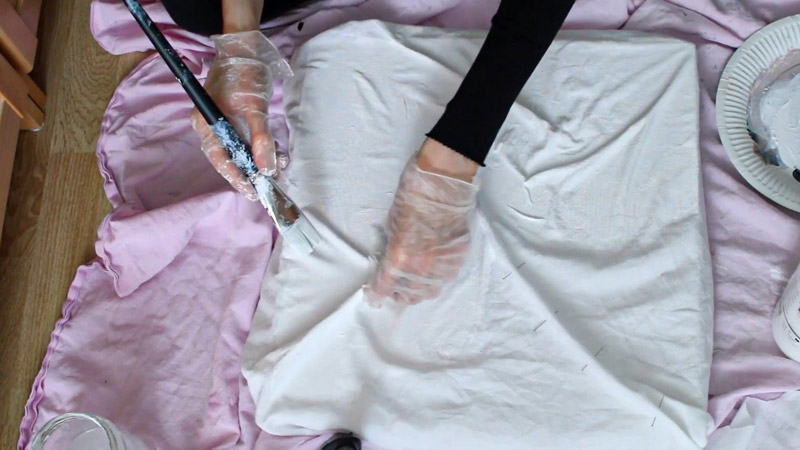
Stretch muslin over a wooden frame to create a blank canvas for painting or other art projects. Its smooth texture makes it an excellent surface for various art mediums.
Backdrop for Photography
Muslin’s even texture and neutral color make it an ideal backdrop for portrait photography. It provides a clean, unobtrusive background easily customized with lighting.
Curtains and Draperies
Muslin’s lightweight and breathable nature makes it a perfect choice for curtains. Its semi-sheer quality allows natural light to filter through while providing some privacy.
Fashion Design Mock-ups
Fashion designers commonly use muslin to create prototypes or toiles. Its cost-effectiveness allows designers to test patterns and adjust before using more expensive fabrics.
Wedding and Event Decorations
Muslin can be used to create a variety of decorations for weddings and events, including tablecloths, chair covers, and even canopies or backdrops.
DIY Garments and Accessories
Muslin is an excellent fabric for creating wearable prototypes or for making garments like casual summer dresses, scarves, or lightweight shawls.
Costumes and Cosplay
Its affordability and versatility make muslin an excellent choice for creating costume mock-ups. It can also be used for the final costume if a natural, unbleached look is desired.
Techniques for Minimizing Fraying
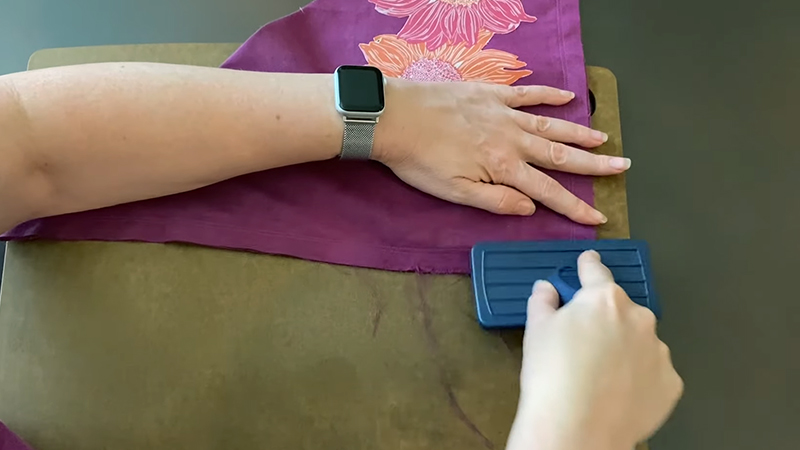
Minimizing fraying is essential when working with fabrics like muslin, which can be prone to unraveling along the edges.
Here are some effective techniques to prevent fraying:
Serging or Overlocking
Serging or overlocking is a professional finishing technique that uses a specialized sewing machine to create a neat and secure edge.
It trims the raw edge of the fabric while simultaneously encasing it in thread, preventing fraying. This method is commonly used in garment construction to achieve a clean and durable finish.
Zigzag Stitch
A zigzag stitch is a versatile option for finishing raw edges. By setting your sewing machine to a narrow zigzag width and a short stitch length, you create a series of angled stitches that interlock with the fabric threads.
This effectively seals the edge, reducing fraying. It’s a practical alternative to serging, especially for those without access to an overlock machine.
Pinking Shears
Pinking shears are scissors with serrated blades that cut fabric in a zigzag pattern. This distinctive cut helps lock the fabric fibers, preventing them from unraveling. It’s a quick and easy way to finish edges, making it a popular choice for projects where efficiency is critical.
Bias Tape Binding
Bias tape is a strip of fabric cut on a diagonal (bias) used to encase and finish raw edges. It can be purchased pre-made or made from the same fabric as your project.
Bias tape along the edges provides a clean and polished finish while preventing fraying. It’s beneficial for curved or rounded edges.
French Seams
French seams are a double-seaming technique that encases the raw edges within the seam itself. This creates a clean and finished look on the fabric’s inside and outside.
French seams are commonly used in garments, especially for lightweight fabrics like muslin, where a neat finish is desired.
Hemming
Hemming involves folding and securing the edge of the fabric to prevent fraying. A double-fold hem is created by folding the edge twice and stitching it in place.
This method reduces fraying and adds a polished finish to the fabric’s edge, making it suitable for a wide range of projects.
Fray-Resistant Fabric Glue
Fray-resistant fabric glue is a specialized adhesive designed to seal the edges of the fabric and prevent fraying. It dries straightforwardly and flexibly, providing a durable finish.
This technique benefits delicate fabrics like muslin, where sewing may not be ideal.
Seam Sealants
Seam sealants are liquid coatings applied to the edges of the fabric to prevent fraying. They create a waterproof barrier that effectively seals the fibers in place.
While commonly used for outdoor fabrics, seam sealants can also be employed for indoor projects to provide extra protection against fraying.
Satin Stitch or Edge Stitching
The satin stitch is a dense, closely spaced zigzag that covers the fabric’s edge. It provides a secure finish that prevents fraying while adding a decorative touch.
Edge stitching, done close to the edge of the fabric, serves a similar purpose by reinforcing the edge and creating a neat finish.
Fabric Glue and Folding
This technique combines fabric glue with folding to create a secure edge. Applying a thin layer of fabric glue along the raw edge and folding it over effectively encases the glue and bonds the fabric together.
This results in a clean, fray-resistant edge that is both functional and visually appealing.
Fray Check or Fray Block
Fray Check or Fray Block is a liquid sealant formulated to prevent fraying. It is applied directly to the edges of the fabric, where it dries transparent and flexible.
This method is convenient for quick and precise application, providing an effective barrier against fraying.
Thread Sealing
Thread sealing involves coating the fabric’s edges with a clear nail polish or sealant. This creates a protective layer that locks the fibers in place, preventing fraying.
While unconventional, this technique can be a practical solution for reinforcing edges, especially when other methods may not be readily available.
FAQs
Does Muslin Fabric Fray Easily?
Muslin fabric tends to fray along its edges, especially if not properly finished.
Can Muslin Fabric Pill Over Time?
Muslin fabric can develop pills, especially if it experiences frequent rubbing or abrasion.
How Should I Pre-Wash Muslin Fabric?
Pre-wash muslin fabric using a gentle cycle and a mild detergent. Avoid using hot water, as it can weaken the fibers.
What Are Some Tips for Minimizing Fraying in Muslin Fabric?
Techniques like serging, pinking shears, applying fray-resistant fabric glue, or employing a zigzag stitch can effectively minimize fraying in muslin fabric.
What are Creative Uses for Muslin Fabric?
Muslin fabric is versatile and can be used for many projects, including backdrops for photography, curtains, fashion prototypes (toiles), quilting, and even as an art canvas.
Wrap Up
Muslin fabric, with its inherent qualities of softness and breathability, offers a versatile canvas for creativity. While it may be prone to fraying and pilling over time, mastering the art of proper handling and care is the key to preserving its integrity.
From pre-washing to employing finishing techniques like serging or pinking shears, these strategies can extend the life of your muslin fabric projects.
Remember, muslin’s utility extends far beyond its quirks, finding a place in various domains, including fashion, photography, and home decor.
By understanding its characteristics and using it wisely, you can continue to craft with this timeless fabric while achieving lasting and remarkable results.
Leave a Reply